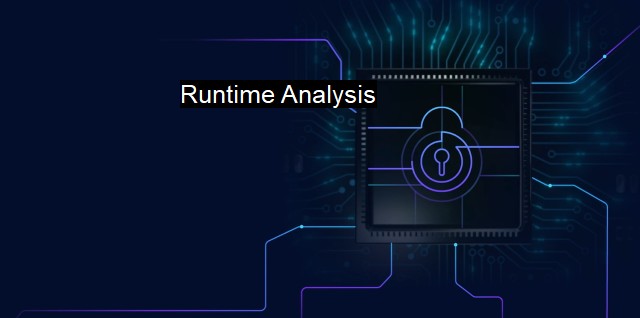What are Runtime Analysis?
Enhancing Cybersecurity through Runtime Analysis: How Real-time Insights can help Identify and Prevent Malware Attacks"
Runtime analysis, in the context of cybersecurity and antivirus technologies, refers to the systematic evaluation of a software program or application during its actual execution or "runtime" to identify potential vulnerabilities, threats, and unwanted behaviors. The ultimate aim of this process is to ensure the secure operation, optimized performance, and reliability of software products, making it an integral aspect of cybersecurity practices.Runtime analysis is powerful because it can illustrate the unexpected or unanticipated threats that static or code-based analysis may miss due to its limited scope. Static analysis evaluates the potential vulnerabilities or problems in a program's code before the real-time operation of hardware. On the other hand, runtime analysis not only understands potential problems from a theoretical perspective but also monitors and analyzes the actual performance, behaviors, interactions, and threat responses of a program during its operation.
In the realm of antivirus technologies, runtime analysis offers enhanced defenses by actively scanning, observing, and responding to the software activities and behaviors in real time. This often involves dynamic testing, monitoring system calls, analyzing code behavior, and even inspecting interactive user inputs, all in a bid to spot any suspicious, abnormal, or unintended behaviors that might signify an infection or intrusion.
Runtime analysis works hand in hand with machine learning and artificial intelligence concepts in many advanced antivirus systems to further enhance their detection and response capabilities. Through continuous tracking of software behavior, these systems can learn and adapt over time to improve their capabilities and defenses based on threat behaviors seen in the past.
While these benefits certainly underscore the importance of runtime analysis, they do tend to come with a few complexities and potential issues. For instance, runtime analysis techniques can sometimes yield false positives, flagging benign behaviors as potentially threatening ones. This is particularly the case with heuristic-based analysis, where detection is based on identifying common patterns or characteristics indicative of malicious software, which can also be present in legitimate programs.
Runtime analysis can sometimes increase the overhead of system performance due to continuous surveillance and analysis, particularly for complex or resource-heavy programs. This is why it becomes crucial to establish optimized and efficient runtime analysis methods, ensuring that system protection does not come at the cost of performance.
As cyber threats grow and continue to evolve, the role and utility of runtime analysis in antivirus and cybersecurity efforts have risen to prominence. It gives security professionals, software developers, and antivirus technologies the edge they need to stay one step ahead of cyber threats. Indeed, the resilience and proactiveness offered by runtime analysis can lead to not just early detection, but also the prevention of cyber threats – by disrupting them and denying them the resources, duplicative function, or operational space they need to work.
Runtime analysis in the realm of cybersecurity and antivirus represents a powerful weapon against emerging, advanced, and unknown threats. Through combined efforts at early detection and proactive defense, runtime analysis ensures that businesses, governments, and individuals can remain secure in a world that is increasingly reliant on digital infrastructure and technologies for virtually every aspect of modern life.

Runtime Analysis FAQs
What is runtime analysis in the context of cybersecurity and antivirus?
Runtime analysis involves analyzing malicious code or suspicious behavior of an application as it is running to detect and prevent potential threats. It is an essential technique used by antivirus software to identify and block malware in real-time.How does runtime analysis work?
The runtime analysis process involves monitoring the execution of an application, tracking its system calls, memory usage, and network traffic. By analyzing these activities and comparing them against known patterns of malicious behaviors, security software can detect and stop threats before they cause damage.What are the advantages of using runtime analysis in antivirus software?
The advantages of using runtime analysis include the ability to detect unknown or zero-day threats that traditional signature-based approaches might miss. It also allows for detecting and stopping threats in real-time, minimizing the damage that malware can cause.Are there any limitations to runtime analysis?
While runtime analysis can be an effective tool for detecting and preventing malware, it can also be resource-intensive, leading to performance issues or false positives. Additionally, some malware may be designed to evade runtime analysis by hiding their activities or using advanced techniques. Therefore, it is important to use multiple techniques and approaches for malware detection and prevention.| | A | | | B | | | C | | | D | | | E | | | F | | | G | | | H | | | I | | | J | | | K | | | L | | | M | |
| | N | | | O | | | P | | | Q | | | R | | | S | | | T | | | U | | | V | | | W | | | X | | | Y | | | Z | |
| | 1 | | | 2 | | | 3 | | | 4 | | | 7 | | | 8 | | |||||||